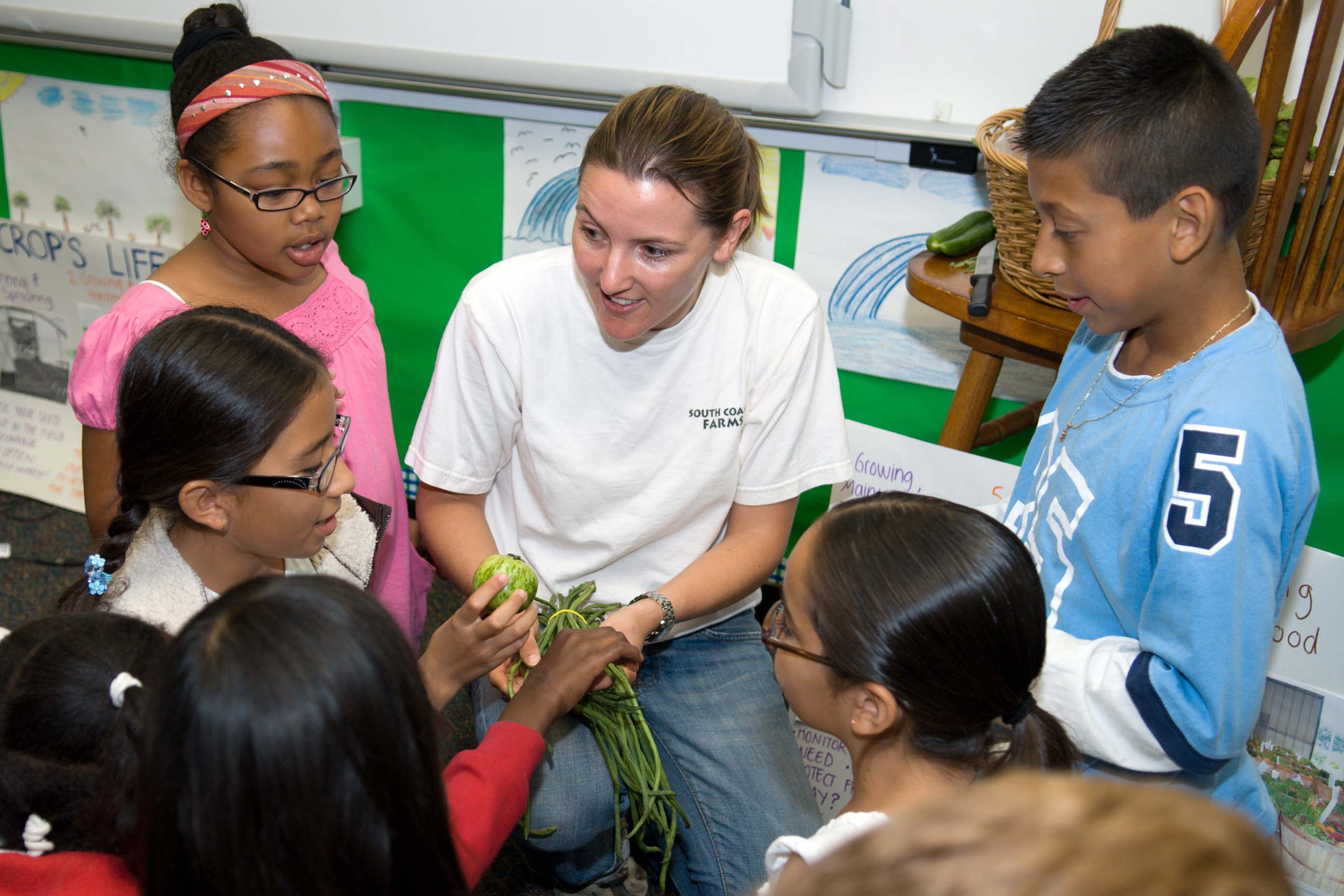
Lunchroom Heroes
Students in the San Diego Unified School District are trading cards of a different variety these days. One “Farmer Bill Brammer” card could equal a “Robin and Lucila from Suzie’s Farm.”
Complete with crops grown, farm size and brand of tractor driven, farmer trading cards are one of the many ways Vanessa Zajfen, the school’s farm to school specialist, connects kids to those who grow their food.
Zajfen, (’05 MS sustainable agriculture) coordinates local food purchasing and programming for the second largest school district in California.
“Vanessa is knowledgeable, engaging and willing to do whatever it takes to get the freshest produce to our children. She has inspired farmers to prepare and deliverfresh organic produce to our over 200 schools,” says Gary Petill, director of food services. “Vanessa also has made agreements with many farmers to plant and harvest products just for our school district.”
Prior to this position Zajfen worked at the Urban and Environmental Policy Institute at Occidental College where she contributed to the nation’s first locally supplied Women Infant and Children (WIC) food program. She has also owned and operated her own produce company sourcing and selling locally grown foods.
After completing her bachelor’s at the University of California at Santa Cruz, Zajfen, an Orange County native, was drawn to Iowa State for the interdisciplinary masters program in sustainable agriculture. She also jumped at the chance
to live “in the middle of America.”
“My favorite course was an immersion course in Iowa agricultural systems,” she says. “One day after I arrived in Iowa I piled into a van with other sustainable ag students and for 24 hours a day for twoweeks we traveled the state visiting big and small farms, conventional and organic, processing plants, dairy farms, beef cattle farms, pig farms. We could compare and contrast those systems easily.”
She draws upon her education andpractical experience when she visits with farmers about how they can meet the district’s needs. Zajfen helps place local foods on menus according to seasonal availability and coordinates how both farmers and the district can meet U.S. Department of Agriculture regulations.
“Our biggest challenges are finding enough supply to meet our needs and training staff. Not only do we need to find enough raw broccoli to feed all our students, but we need to train our staff how to prepare it rather than using processed
frozen,” Zajfen says.
She says price is always on her mind nas well. “We have $1.03 to create a school meal. When a local apple makes up 25 cents, things add up really quickly.”
For Zajfen it is rewarding to see the program grow into a framework through which the district’s entire food system ismoving to healthier meals. “Farm to school is a radical shift and a lot of people have been inspired,” she says.



